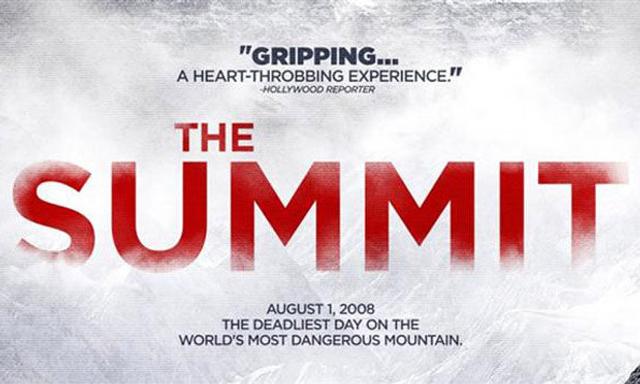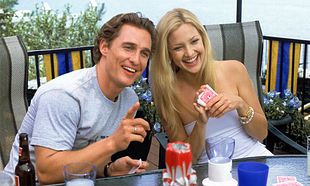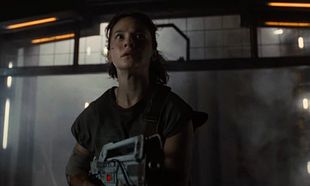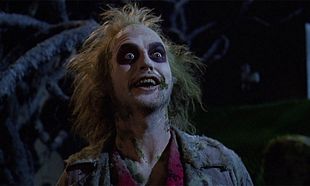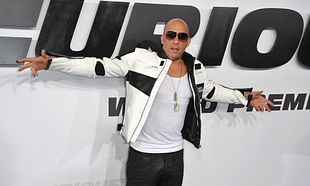Released in cinemas on November 22nd, The Summit is the true story of one of the deadliest expeditions to ever take place to the summit of K2. In August 2008, a total of eleven climbers out of twenty-four had died, including Irishman Ger McDonnell.
Director Nick Ryan spoke to us about the complexities of filming on location with people were there during the events and the realities of what happened.
The film's use of re-enactments is quite different to most documentaries about mountaineering, primarily because it's difficult to recreate the conditions and the locations. What made you decide to do this?
The primary decision was based on the desire to portray the complex narrative in a compelling and engaging manner. Even before we saw what footage was shot on the mountain during the 2008 expedition, we knew that there would be holes in the story, as when things started to go wrong, the climbers would inevitably be busy trying to survive and not so interested in documenting that.
Also we felt that even if there was footage of some of the climbers falling, we were uncomfortable with showing that, feeling it too voyeuristic and ghoulish.
In shooting the re-enactments, veracity was key, and they were based entirely on the testimonies of the survivors and were supervised on location in Switzerland by Pemba Gyalje Sherpa and three other Sherpa (Chhiring Dorje Sherpa, Pasang Lama and Tsering Lama) who climbed that day in 2008 to ensure technical accuracy. This was emotionally difficult for all of those climbers but was always part of how we felt this would be made.
As well as this, mixing it with actual footage gives it a real sense of credibility, was that important for you or did you feel you could make the documentary without it?
You could of course have made the film without the re-enactments, however it would be very different. Our hope was to engage the audience in an experiential manner, to put them in the boots of the climbers. It was never our intention to trick the audience into believing the re-enactments were actual footage, and in fact are far more cinematic than the actual archive footage. The archive was truly incredible, breathtaking at times, and we were always envious of how they could just point the camera anywhere and it looked amazing. We had to work very hard to achieve anything close to that, although having said that, the climbers in 2008 worked infinitely harder to get the footage they shot on the mountain.
The film really does read and feel, in places, like a horror movie. Was this intentional?
The film does play like a horror film because the events in 2008 were truly horrific and sometimes worse than we could imagine. In hearing the stories for the first time from the individual survivors we saw this correlation in that the mountain seemed to be taking lives one by one over the duration of 48 hours. It was incredibly intense.
Given that the film is told in flashback and from different viewpoints, did that make for a more difficult experience for you in terms of editing and putting the structure of the film together? Did you, perhaps, discount some of their stories as too unbelievable or coloured by their experience?
The structure of the film was derived at from the need to be able to show the audience what happened in 2008 and then put the causes that led to tragedy into context. If this story was told in a completely linear manner then it would be 40 minutes before anything would happen, and we would be watching climbers discussing seemingly irrelevant issues. The editing was lengthy and very considered and editor Ben Stark was an incredible and inspirational source along with Mark Monroe (who wrote the film) in the process.
We never discounted stories as thematically the film is about stories. Memories were absolutely affected by the extreme altitude and debilitating effects of the Death Zone (that area above 7500m where the body is slowly dying, cell by cell). We chose to allow the climbers to tell their stories and let the audiences make their own minds up on what they hear.
Was your intention to make people more afraid / aware of the dangers of mountain-climbing?
We never set out to be judgmental about the actions and risks they took and will continue to take. If audiences take home the opinion that they will never climb a mountain like K2 that is fine, and equally if they feel the desire to head to Pakistan and embrace the challenge then great. Hopefully the film will serve as a reminder to the dangers and risks climbers are exposed to, but also the great joy and excitement that it brings.
Did you find yourself exasperated by the climbers actions and motivations? It seems, at times, that they're wilfully putting themselves in danger, knowing that the conditions are getting progressively worse and so on.
If you were to look at it slightly differently, and we were to ask you this question: If you had spent 67 days establishing camps and acclimatizing to the altitude and you find yourself on a perfect day, with no wind or clouds, six hours from the summit...would you turn back?
